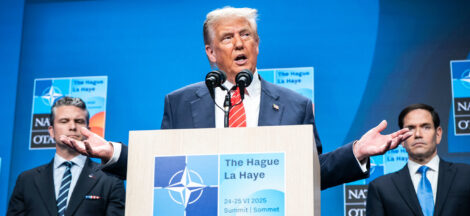 NEW DELHI:China’s growing assertiveness, especially in the contentious South China Sea, and the volatile AfPak region will figure high in the bilateral defence and strategic cooperation talks betweenIndiaand theUSon Tuesday and Wednesday.
NEW DELHI:China’s growing assertiveness, especially in the contentious South China Sea, and the volatile AfPak region will figure high in the bilateral defence and strategic cooperation talks betweenIndiaand theUSon Tuesday and Wednesday.
Indiawill also convey toUSsecretary of defence Leon Panetta, on his first visit toIndiaafter taking over from Robert Gates last year, thatNew Delhiis ready to seal more arms deals and boost defence cooperation withWashingtonbut is not willing to ink the so-called foundational military pacts as of now.
Panetta, who will hold talks with PM Manmohan Singh, defence minister AK Antony, national security advisor Shivshankar Menon, has held that theUSwants to “affirm” its interest in building “a strong security relationship” withIndiaduring the visit.
WhileAntonyhad expressed concern aboutChina’s huge military spending during last week’s Shangri-La Dialogue atSingapore, Panetta too talked about shifting the bulk of the American naval fleet to the Asia-Pacific region by 2020.
In the backdrop of China’s aggressive behaviour in South China Sea, impinging on the territorial claims of countries like Taiwan, Vietnam, the Philippines, Malaysia and Singapore, both Antony and Panetta also stressed the critical need to ensure the freedom of navigation and passage in international waters.
On the bilateral front, despite persistent prodding by theUS,Indiacontinues to keep foundational pacts like the Logistics Support Agreement (LSA), Communication Interoperability and Security Memorandum Agreement (CISMOA) and Basic Exchange and Cooperation Agreement for Geo-Spatial Cooperation (BECA) firmly on the backburner.
But theUSis going great guns as far as defence deals are concerned.India, for instance, is now close to inking $647 million contract for the acquisition of 145 M-777 ultra-light howitzers from theUSin a direct government-to-government deal under the Foreign Military Sales (FMS) programme.
Moreover, Boeing is also set to bag the $1.4-billion contract to supply 22 missile-armed helicopter gunships to the IAF after its AH-64D Apache Longbow outperformed Mil Moscow Helicopter Plant’s Mi-28N `Night Hunter’ in the field trials, as reported by TOI earlier.
Despite having lost out in the almost $20 billion MMRCA (medium multi-role combat aircraft) project to supply 126 fighters to IAF, the US has notched up military sales worth over $8 billion to India over the last decade.
These include the big-ticket ones like $4.1 billion for 10 C-17 Globemaster-III strategic airlift aircraft, $2.1 billion for eight P-8I maritime patrol aircraft and $962 million for six C-130J “Super Hercules” planes. Negotiations are being finalized for acquiring six more C-130J as well as four more P-8I aircraft.
INDIAN NAVY TO GET FIRST DEDICATED MILITARY SATELLITE
 The Indian Navy is finally set to get their first-ever dedicated military satellite, a naval surveillance and communications one, as part of their long-standing quest to effectively harness the final frontier of space.
The Indian Navy is finally set to get their first-ever dedicated military satellite, a naval surveillance and communications one, as part of their long-standing quest to effectively harness the final frontier of space.
The satellite is ready and is on standby for launch. This would be the first dedicated satellite for the Indian Navy and would full fill the Navy’s ‘Rukmani’ project which is aimed at achieving full network centricity to achieve enhanced maritime domain awareness.
The geo-stationary naval satellite has “already been shipped out” for its launch that will take place “within a month or so”, government sources said.
The Indian Navy has been tight lipped about the satellite and it’s launch as it will add a huge technological leap for a navy that is already a formidable force to reckon with.
The satellite, will have over a 1,000 nautical mile footprint over the Indian Ocean Region (IOR) stretching from Africa’s east coast right tillMalaccaStrait, will enable the Navy to network all its warships, submarines and aircraft with operational centres ashore through high-speed data-links.
Ground based infrastructure and installation of equipments on warships has been tested thoroughly. During the last naval exercise, the Indian Navy had extensively tested it’s network centricity. The exercise was held using a hired communication satellite through which the entire fleet was linked.
The ships operating in theBayofBangalwould get real-time data from ships operating in theArabian Sea. There are around 300 dedicated or dual-use military satellites orbiting around the earth at present, with theUSoperating over 50% of them, followed byRussiaandChina.
China, in particular, is pursuing an extensive military-space programme that even extends to advanced ASAT (anti-satellite) capabilities with “direct-ascent” missiles, hit-to-kill “kinetic” and directed-energy laser weapons.
DRDO, on its part, contends it can quickly fashion ASAT weapons, if required, by marrying the propulsion system of the over 5,000-km Agni-V missile tested recently with the “kill vehicle” of the almost-ready two-tier BMD ( ballistic missile system) system it has developed.
ButIndiais still some distance away from effective ASAT capabilities. The government is also not yet willing to establish a tri-Service Aerospace Command on the lines of the Strategic Forces Command which handles nuclear weapons.
PANETTA TO PUSH FOR INDIA-US STRATEGIC PARTNERSHIP
To give a big push to rapid transformation of the US-India defence relationship into a strategic partnership, US Defence Secretary Leon Panetta is coming toNew Delhion a two-day visit beginning Wednesday.
Mr Panetta’s visit toIndia, his first as defence secretary, comes just a week before the India-US strategic dialogue is slated to be held inWashington.
Mr Panetta will meet Prime Minister Manmohan Singh, Defence Minister A. K. Antony and National Security Adviser Shivshankar Menon during his visit.
In an apparent bid to build up trust, theUShas recently removed laboratories of the Defence Research and Development Organisation (DRDO) from the entity list, thereby allowing the DRDO to freely procure sensitive technologies fromWashington.
TheUSdefence establishment is eager to partner withIndiaand has proposed closer operational engagement with the Indian military.
There will be fresh rounds of discussions on basic defence agreements namely-the Logistics Support Agreement (LSA), Communication Interoperability and Security Memorandum of Agreement (CISMOA) and Basic Exchange and Cooperation Agreement for Geo-Spatial Cooperation (BECA). Both the sides have already signed the end user agreement some time ago, under whichUSmay carry out verification of it’s weapon systems supplied toIndia.
India’s defence trade with theUSis increasingly on the rise asIndia’s spending power rises and openly competes withChinaon the north-east borders and theSouth China sea.New Delhihas signed more than 20 deals worth over $10 billion in the past one decade. These include amphibious transport ship INS Jalashwa, UH-3H helicopter, C-130J transport aircraft, P-8I maritime reconnaissance aircraft , Harpoon Block-II anti-ship missiles and C-17 Globemaster airlift aircraft.
The government has recently cleared procurement of 145 ultra-light howitzers worth 647 million dollars for deployment on theChinaborder, while negotiations are said to be in the final stage for acquiring six more C-130J, four more P-8I aircraft, Javelin anti-tank guided missiles, Jaguar aircraft engine upgrades and AH-64D attack helicopters.
CITY WOMAN SCALES EVEREST IN INDIAN ARMY EXPEDITION
MUMBAI: Twelve years ago, when Goregaon resident Prachi Gole-Taneja signed up for a basic mountaineering course at Manali to enjoy the snow and get away from sweltering Mumbai heat, she had no idea she would scaleMount Everestone day. On May 26, Captain Prachi Gole-Taneja, 28, successfully scaled the Everest, the highest peak in the world at 8,848 meters above sea level. She was part of the Indian Army Women Everest Expedition 2012, the first ever all-women team to achieve the feat from theNepalside, the traditional, but tougher route.
In 2005, through the first Everest expedition with women army officers, two women had reached the peak from theTibetside.
“I was on the top of the world and we had 100% success rate with no casualty or injuries. Only when Sagarmatha (Mt Everest) wishes to see you, can you do it,” said an excited Gole-Taneja, fromKathmanduwhere she is enjoying a break with the other team members.
In May, six deaths were reported from other expeditions due to rough weather.
In all, 21 members, including support staff such as sherpas and technical staff, had accompanied the seven women officers.
Gole-Taneja was the first one from her family, full of doctors and engineers, to join the army or attempt anything adventurous.
After initial apprehension, they are proud and relieved at the same time about her feat.
“I used to be very scared to watch theMt.Everestvideos, which she would watch at home. I knew it is a matter of life and death out there. Now that she has conquered it, I want to see them. I could not have asked for more in life,” said Surekha Gole, her mother, a pre-primary school principal, who is in theUSat present.
“Our mother always taught us to get some title in front of our names and not just be a Mrs. I didn’t have any academic ambitions, but did well in the National Cadet Corps in college. That’s why I decided to join the army,” said Gole-Taneja, who completed her training from Chennai in 2007 and is currently posted inKashmir.
SECOND DEFENCE COUNSEL WITHDRAWS IN SIBLINGS’ MURDER CASE
COIMBATORE: Rajendran, defence counsel for Manoharan, the second accused in the siblings’ murder case has withdrawn from the case citing personal reasons.
He was the second defence counsel to withdraw from the case.
On October 30, 2010, a 10-year-old girl and her seven-year-old brother, children of a textile merchant from the city, were abducted by a van driver, who used to transport the children to the school. Originally, the abduction was planned for ransom, subsequently the accused Mohanakrishnan along with his accomplice Manoharan, sexually abused the girl and drowned both the girl and her brother in the PAP contour canal.
The bodies were recovered subsequently and the accused were secured by the police.
Cases were registered against both of them under sections 120 B (Conspiracy), 364 A (kidnap for ransom), 376 (sexual assault) and 302 (murder) and 201 (concealment of evidence) of Indian Penal Code. On November 8, 2010, the City Police took custody of the accused.
On November 9, 2010 morning, while being taken to the scene of crime to record statements, the police shot the first accused to death.
Police said that the encounter was reportedly in a bid to foil his attempt to kill the police officials and escape to Kerala.
With the death of the first accused, charges abated against him and the trial was on against the second accused Manoharan.
The lawyers inCoimbatoreresolved not to appear for the accused in the trial.
Meanwhile, nearly 121 prosecution witnesses were listed and 60 documents marked as material evidences besides filing of a 500-page charge sheet in the case.
However, according to the legal requirements, the District Aid Legal Services Authority appointed a counsel for Manoharan.
The lawyer withdrew from the case, following difference of opinion between the defended accused and his counsel, sources said.
Legal Aid Services Authority then appointed another counsel Rajendran, who has also now withdrawn from the case citing personal reasons. The State had appointed a Special Public Prosecutor in the case to ensure undivided attention to bring about a logical conclusion to the case. Investigating Officer in the case, Inspector M. Kanagasabapathy said that prosecution side had completed its work and after appointment of another counsel by the legal services authority to defend the accused, the trial was likely to resume.
Now, the trial before the Mahila Court Judge M.N. Subramanian has almost reached mid way and a verdict was expected within the next 40 to 60 days, sources expressed confidence.

State Government Finances Witnessed Deterioration In 2024-25
in
IPA Special
Jun 26, 2025
·
Up Next:
Benefiting From Mass Murder

